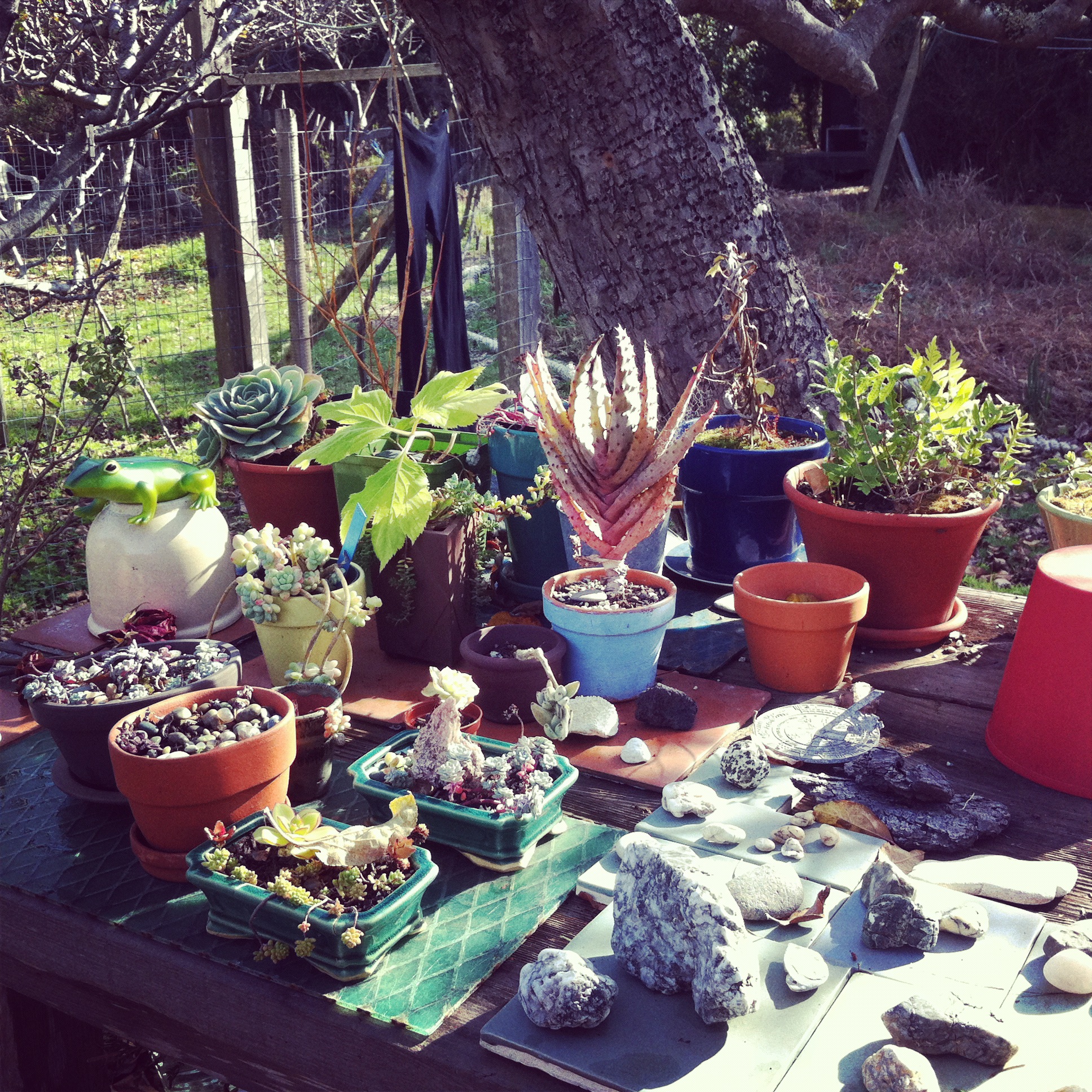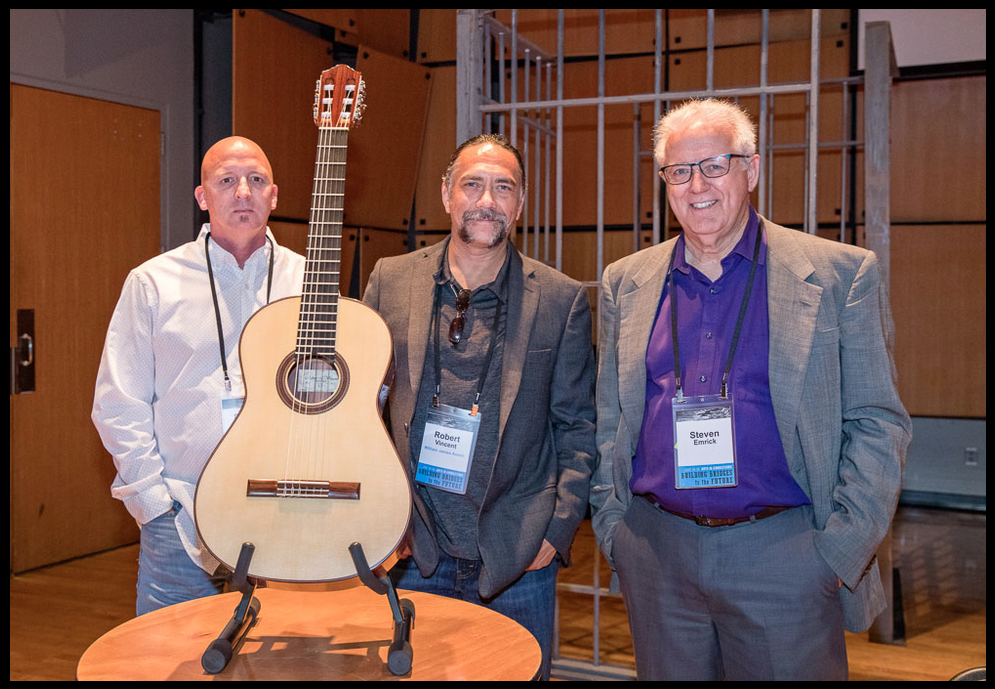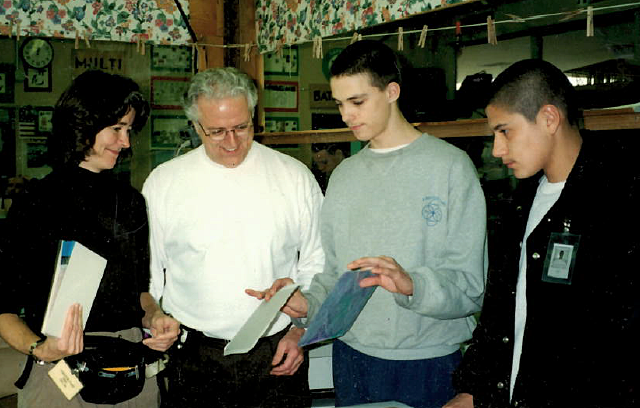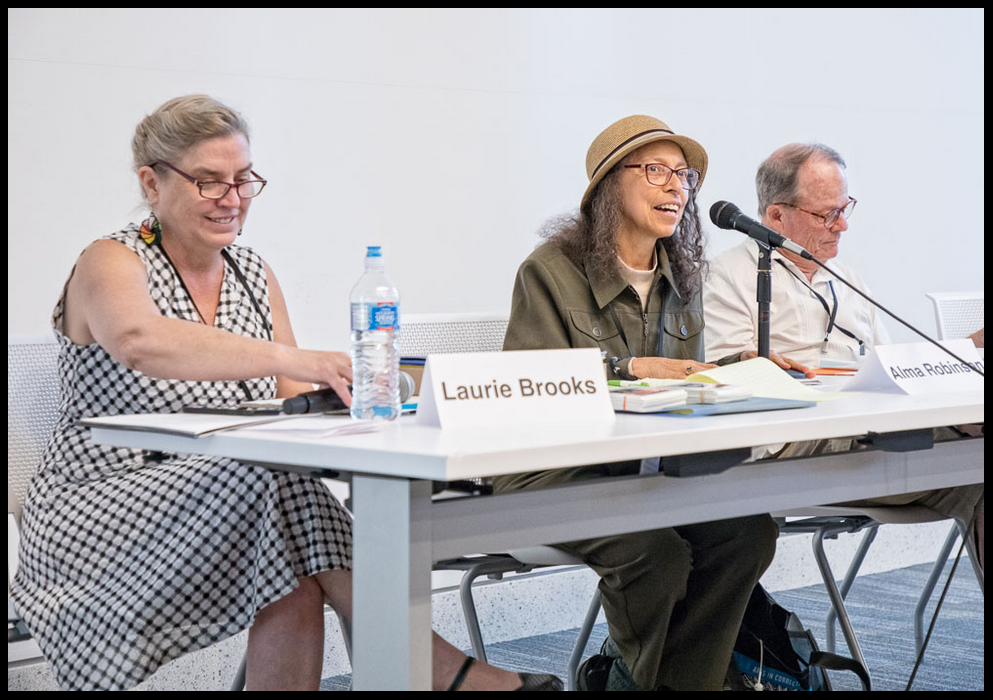Nani has a gift for entering others’ cultures in a respectful and sensitive way. That gift, combined with her strong curiosity and sense of adventure, has led to a unique trajectory from her childhood in Indonesia to her current job as a project manager at LinkedIn. In Part 5 she describes her discovery of poetry.
Sarah: I think you started studying poetry writing with me right after you began working full-time at the Language Acquisition Center.
Nani: That’s right, we met in the fall of 2002.
Sarah: What drew you to poetry?
Nani: I’d read Charles Bukowski in one of my undergrad classes. Back home in Indonesia, poetry had all kinds of rules. When I read Bukowski, I was surprised and impressed that poetry could look and sound like that. “Wow, you can include cuss words and write in free verse about daily stuff!” I saw a flyer in the campus library about your poetry workshops and consultations. I was curious. When I first started working with you, if you remember, I didn’t join a workshop—I was too shy. You had put on your flyer that you also worked with people one-on-one, and that appealed to me. Then after you told me more about your workshops, I realized it would feel safe—I didn’t have to be somebody already in order to join.
Looking back, I can see that being in the workshop was such good practice in terms of learning how to express myself in a more public forum. I also paid attention to how you taught the class. All the students were working in different styles, writing different kinds of work. The course readers you put together introduced me to a lot of different kinds of poetry as well. I remember you had us read a poem about Frida Kahlo and you pulled a biography of her off your shelf; it had lots of reproductions of her work. You introduced me to Joanne Kyger’s work too. I was attracted to it for the same reasons I was drawn to Bukowski—the frankness, the dailiness, no rules. I wanted to write like that.
My undergraduate studies in English literature and Language Studies were more externally oriented. That’s where I first realized that people can express their individual visions and others might read that work. Coming from my culture, that was such new, exciting idea. Then in your workshops I was looking internally at what I had to say. The two approaches went hand in hand.
Sarah: Tell me about becoming friends with Joanne Kyger.
Nani: After you introduced me to her work, I decided to attend Naropa’s summer writing program, which she taught in. A lot of students wanted to hang out with her but it seemed like they were mostly curious about her personal life and her marriage early on to Gary Snyder. I didn’t feel the need to ask about those things. She told me that she really appreciated that I just wanted to talk about her work. For a while after Naropa we wrote postcards to each other. Then she gave me her email address, and then she invited me to her home in Bolinas. From then on, I visited her about once a year.
I felt our deepest connection came mostly in relation to poetry—I appreciated her work, and she appreciated mine. In person, we were very fond of each other, but I now wish we had a deeper in-person connection. At one point she invited me to stay overnight at her place and I didn’t do it. I feel a little regretful knowing that I could have formed a deeper friendship and mentorship. She was very encouraging about my work. She published one of my poems in a local Bolinas newsletter.
Next: Human Remains and Cultural Artifacts
-
August 2021
- Aug 31, 2021 The Heart Is the Major Target—Part 9: The Teacher Role Isn't My Essence Aug 31, 2021
-
June 2021
- Jun 13, 2021 The Heart Is the Major Target—Part 8: Machines Spilling Out Teachers Jun 13, 2021
-
April 2021
- Apr 14, 2021 The Heart Is the Major Target—Part 7: A Waterfall of Inspiration Apr 14, 2021
-
February 2021
- Feb 14, 2021 The Heart Is the Major Target—Part 6: Grab the Right Computer File Feb 14, 2021
-
December 2020
- Dec 26, 2020 The Heart Is the Major Target—Part 5: Yoga Is My Second Child Dec 26, 2020
-
November 2020
- Nov 5, 2020 The Heart Is the Major Target—Part 4: Wow, This Is Me Nov 5, 2020
-
October 2020
- Oct 4, 2020 The Heart Is the Major Target—Part 3: In Exile in My Own Country Oct 4, 2020
-
August 2020
- Aug 23, 2020 The Heart Is the Major Target—Part 2: Openness to the Unseen Aug 23, 2020
- Aug 2, 2020 The Heart Is the Major Target—Part 1: Let's Move Around; We'll Feel Better Aug 2, 2020
-
July 2020
- Jul 25, 2020 Educator Wellness Series Conclusion: Moving Forward with Wellness Jul 25, 2020
- Jul 6, 2020 Educator Wellness Practice #10: Inhabiting the Dignified Stance of "Adequate" Jul 6, 2020
-
June 2020
- Jun 17, 2020 Educator Wellness Practice #9: Jun 17, 2020
- Jun 3, 2020 Educator Wellness Practice #8: Reducing Stress Through Body Scanning Jun 3, 2020
-
May 2020
- May 21, 2020 Facebook Live Event: A Conversation About the Impact of Saying Goodbye to Students May 21, 2020
- May 13, 2020 Educator Wellness Practice #7: Setting Intention and Letting Go of Results May 13, 2020
- May 6, 2020 Educator Wellness Practice #6: Practicing Goodwill as Self-Care May 6, 2020
-
April 2020
- Apr 29, 2020 Educator Wellness Practice #5: Dealing with Constant Change Apr 29, 2020
- Apr 22, 2020 Educator Wellness Practice #4: Listening to Silence Apr 22, 2020
- Apr 21, 2020 Facebook Live Event: A Conversation About the Importance of Self-Care Apr 21, 2020
- Apr 15, 2020 Educator Wellness Practice #3: Apr 15, 2020
- Apr 8, 2020 Educator Wellness Practice #2: Engaging Wisely with News and Media Apr 8, 2020
- Apr 1, 2020 Educator Wellness Practice #1: Breathe ... Keep Breathing Apr 1, 2020
-
March 2020
- Mar 25, 2020 Educator Wellness Series for Collaborative Classroom Mar 25, 2020
-
May 2019
- May 19, 2019 Managing to Build Bridges - Part 8: Do We Want to Be Right in a Dictionary Sense? May 19, 2019
-
April 2019
- Apr 27, 2019 Managing to Build Bridges - Part 7: You Just Need to Find a Good Husband Apr 27, 2019
- Apr 6, 2019 Managing to Build Bridges - Part 6: Human Remains and Cultural Artifacts Apr 6, 2019
-
March 2019
- Mar 17, 2019 Managing to Build Bridges - Part 5: Poetry Has No Rules Mar 17, 2019
- Mar 3, 2019 Managing to Build Bridges - Part 4: Dessert Goes to a Different Stomach Mar 3, 2019
-
January 2019
- Jan 13, 2019 Managing to Build Bridges - Part 3: I Felt Pretty Stupid Jan 13, 2019
-
December 2018
- Dec 9, 2018 Managing to Build Bridges - Part 2: Such a Bad Kid Dec 9, 2018
-
November 2018
- Nov 23, 2018 Managing to Build Bridges - Part 1: The Pressure to Be a Certain Type of Girl Nov 23, 2018
-
October 2018
- Oct 23, 2018 Leadership Without Ego - Part 6: Mayberry with an Edge Oct 23, 2018
- Oct 1, 2018 Leadership Without Ego - Part 5: Everyone Everywhere Deserves to Make Art Oct 1, 2018
-
September 2018
- Sep 10, 2018 Leadership Without Ego - Part 4: I'm About Ready to Swear Sep 10, 2018
-
August 2018
- Aug 19, 2018 Leadership Without Ego - Part 3: The Dalai Lama Breaks All the Rules Aug 19, 2018
-
July 2018
- Jul 29, 2018 Leadership Without Ego - Part 2: The Kids Melted Under That Praise Jul 29, 2018
- Jul 10, 2018 Leadership Without Ego - Part 1: The Workshop Was Neutral Territory Jul 10, 2018
-
May 2018
- May 26, 2018 The Alchemy of Service - Part 5: Watch Out, Someone's Behind You May 26, 2018
- May 6, 2018 The Alchemy of Service - Part 4: Fireworks and Tears May 6, 2018
- May 5, 2018 The Alchemy of Service - Part 3: Joann Wong! You Are Chinese! May 5, 2018
-
April 2018
- Apr 6, 2018 The Alchemy of Service - Part 2: Mom, It's Only a Nickel Apr 6, 2018
-
March 2018
- Mar 19, 2018 The Alchemy of Service - Part 1: Mouse Soup Mar 19, 2018
-
February 2018
- Feb 18, 2018 Back to the Garden - Part 4: Mountain Lion Footprints on the Deck Feb 18, 2018
- Feb 3, 2018 Back to the Garden - Part 3: "You're a Good Egg—Happy Easter" Feb 3, 2018
-
January 2018
- Jan 15, 2018 Back to the Garden - Part 2: "A Pretty Big Failure" Jan 15, 2018
- Jan 1, 2018 Back to the Garden - Part 1: "Aesthetic Shock" Jan 1, 2018
-
August 2017
- Aug 15, 2017 Goodbye Self-esteem, Hello Self-compassion – Part 3: Real Love Aug 15, 2017
-
July 2017
- Jul 31, 2017 Goodbye Self-esteem, Hello Self-compassion – Part 2: Mirror, Mirror Jul 31, 2017
- Jul 17, 2017 Goodbye Self-esteem, Hello Self-compassion – Part 1: Bashing Vasco Jul 17, 2017
-
May 2017
- May 28, 2017 This Thing I Found: Teens Teach Us How to See Freshly May 28, 2017
-
March 2017
- Mar 20, 2017 Dream On - Part 6: Dream Analysis Example Mar 20, 2017
- Mar 7, 2017 Dream On - Part 5: A Dream Analysis Technique (cont.) Mar 7, 2017
-
February 2017
- Feb 20, 2017 Dream On - Part 4: A Dream Analysis Technique Feb 20, 2017
-
January 2017
- Jan 22, 2017 Dream On - Part 3: Recording Dreams Jan 22, 2017
- Jan 15, 2017 Dream On - Part 2: Dream Recall Jan 15, 2017
-
December 2016
- Dec 30, 2016 Dream On – Part 1 Dec 30, 2016
- Dec 12, 2016 Enjoying the Ride of Serendipity Dec 12, 2016
- Dec 6, 2016 Agnes Martin: A Singular Career Dec 6, 2016














